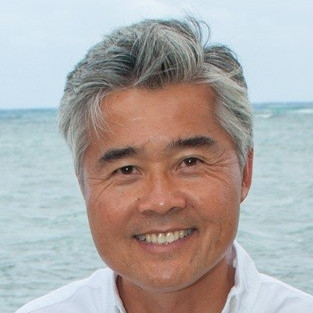OIDA Sponsored Webinar: Reducing the Cost of 200Gbps and 400Gbps Optics using Open Eye MSA Compliant Chipset Solutions
02 September 2020 11:00 - 12:00
Eastern Time (US & Canada) (UTC -05:00)This webinar is targeted for suppliers of optical modules. The Open Eye MSA approach is a natural evolution relative to today’s high-volume optical nodes, enabling users to scale to next generation Baud rates. Presenters will overview chip-set and test solutions for implementation of modules based on Open Eye MSA specifications.
- Brief Intro and Open Eye MSA overview
- Optics value proposition (low power / low latency / low cost)
- Semiconductor solutions
- Semiconductor solutions
- Laser/PD supplier
- Test solution
This webinar is a two part series - click to view more information about the first webinar.
Sponsored By:

Speakers
 Brad Booth, Principal Hardware Engineer, Microsoft
Brad Booth, Principal Hardware Engineer, Microsoft
Brad Booth is a distinguished leader in technology development and standardization. He is a Principal Hardware Engineer in Microsoft’s Next Cloud System Architecture Group where he leads the development of next generation optical connectivity solutions for Microsoft’s Cloud and AI datacenters. Previously, Brad has held technology strategist and engineering positions at Dell, Intel and Bell-Northern Research. The holder of over 20 patents related to networking technologies, he has also received awards for his contributions to industry consortia and IEEE 802.3 Ethernet standards.
 Tom Palkert, Open Eye MSA Standards Editor, Open Eye MSA
Tom Palkert, Open Eye MSA Standards Editor, Open Eye MSA
Tom has worked on high speed SERDES, connector and interconnect designs from 100Mbps to 112Gbps. He is involved in Ethernet, Fibre channel, Infiniband and the Optical Internetworking Forum. In addition he has been editor of many SFF and MSA documents including SFP, QSFP, CDFP and QSFP-DD. Tom is a past member of the OIF board of directors, past chair of the OIDA silicon photonics alliance and is currently chair of the Fibre Channel T11.2 Physical Layer Task Group and vice chair of the OIF Physical and Link Layer (PLL) working group. He has BS and MS degrees from the University of Minnesota and 5 patents.
 Kees Propstra, Vice President of Marketing, MultiLane
Kees Propstra, Vice President of Marketing, MultiLane
Kees has over 20 years of experience in technology marketing in a variety of roles. He started his career at Akzo Nobel Central Research, working in optical polymer switch R&D. He subsequently transitioned to product management at JDS Uniphase, where he was responsible for the market introduction of new products such as waveguide optical switches and dynamic gain equalizers. Kees moved to Silicon Valley to join OpTun as director of product management responsible for defining new product strategy of its integrated optics platform. Prior to joining MultiLane, Kees was group manager of the Tektronix application engineering team in Silicon Valley. He has a Master of Science in physics and a post-graduate degree in modern optics from the University of Twente, the Netherlands.
 Marek Tlalka, Senior Director of Marketing, High Performance Analog, MACOM (MSA Chair)
Marek Tlalka, Senior Director of Marketing, High Performance Analog, MACOM (MSA Chair)
Marek Tlalka is the Senior Director of Marketing for High Performance Analog at MACOM. Prior to joining MACOM, Marek worked at Mindspeed Technologies, Luxtera, Conexant, Applied Digital Access and GTE Communications Systems. Marek has over 30 years of experience in the telecommunications field covering areas such as Engineering, Product Management, Marketing and Sales. Marek received his BSEE from Illinois Institute of Technology and his MBA from San Diego State University.
 Julius Yam, Marketing Manager, Data Center, Semtech
Julius Yam, Marketing Manager, Data Center, Semtech
Julius Yam is a Market Manager at Semtech Corp. leading Data Centre product marketing. Previously, Julius has held ASIC Design and Verification positions at Cisco, Cortina, Gennum, Silicon Optix and Tropic Networks. Julius graduated with honors from the University of Waterloo with a Bachelor of Science in Electrical Engineering.
 Al Yuen, VSCEL R&D Manager, Lumentum
Al Yuen, VSCEL R&D Manager, Lumentum
Al started his career at HP Labs working on parallel optics for data centers and later started Alvesta, a company that provided the first 4-channel transceivers in the industry. At Emcore, he developed the first active optical cable for high performance computing (HPC) Infiniband applications. Recently at Lumentum, Al has been focused on ramping 6” wafer fabrication to meet the demands of 3DS and data communication markets. He received his PhD from UC Santa Barbara.
The views expressed in this webinar do not reflect those of OIDA and The Optical Society.
